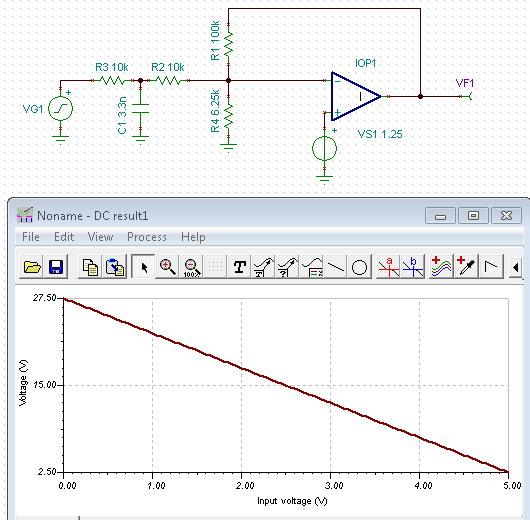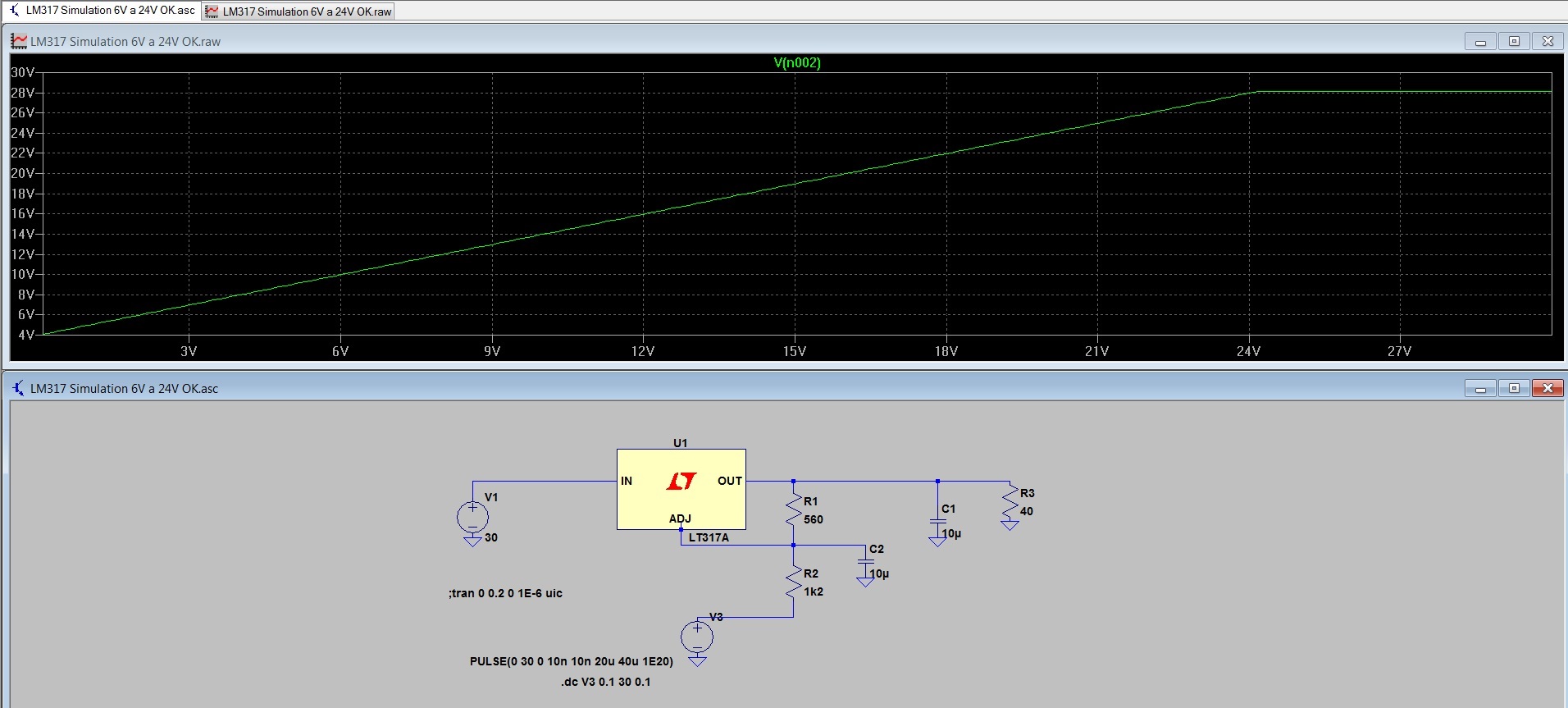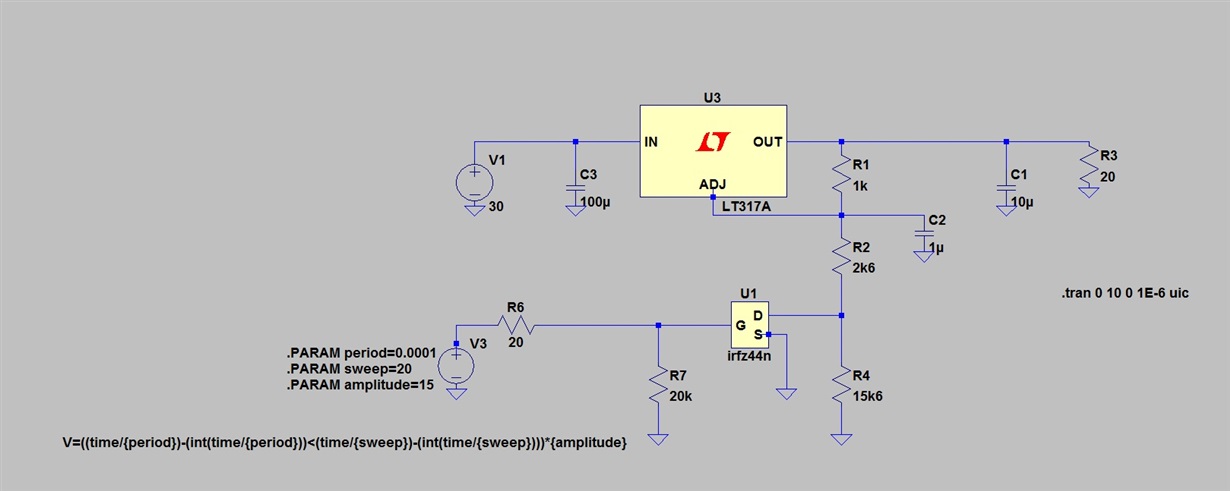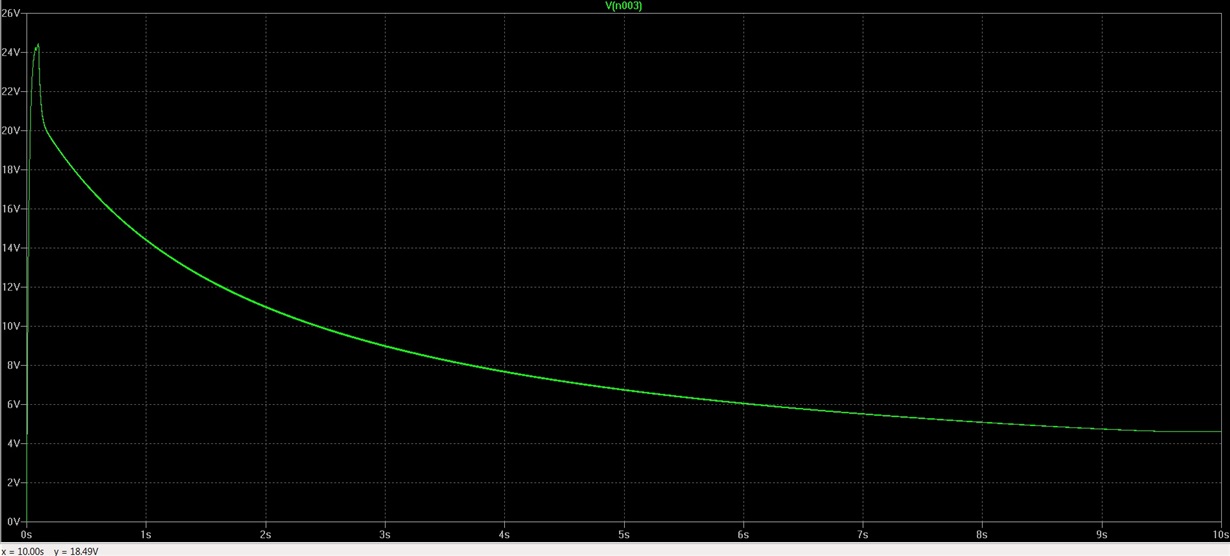Hello,
My application involves receiving temperature information from plant to dsp and control the speed of a set of fans according to the temperature.
Voltage on fans should span from 6 to 24V, current lower than 200mA.
I thought LM317 would be ideal for that, because I can adjust the output voltage Vo using the dsp PWM. So my circuit is:
I chose those R1 and R2 values because, not considering PWM action (e.g, opening MOSFET), Vo is 24V.
Simulations show that for:
PWM >= 20V, LM317 saturates and gives Vo = 28.1V
PWM = 15V, Vo = 23.7V
PWM = 10V, Vo = 18.8V
PWM = 5V, Vo = 13.75V
PWM = 1V, Vo = 9.75V
I find no way to analyse (equate) this circuit. Superimposition theorem doesn't seem very helpful here.
I have seen that the lower R3 makes no difference to the circuit once PWM kicks in.
I have latter found that setting R2 = 1k2 gives me the span I need. In this case, PWM =1V gives Vo = 5V and PWM = 28V obviously saturates Vo = 28.1V.
1) But I can't find an equation for Vo with PWM. How can I equate this circuit when the PWM kicks in?
2) Also, for analysis sake, considering that there is no load connected, I presume that the minimum load current (up to 10 mA) has to flow through the MOSFET and back to VIN supply once PWM kicks in. Is this correct? If yes, power supply has to be able to sink it.
3) Considering the same case above (2), but now load is connected, load current will flow through load and not through MOSFET. Is that right?
Thank you!










